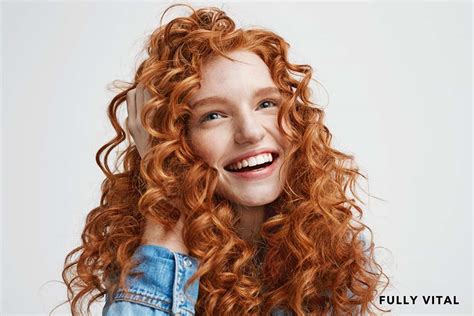For many, the quest for luscious, healthy hair is an ongoing battle. While some may be blessed with naturally voluminous locks, others struggle with thin, lackluster strands that leave them feeling self-conscious. The solution to this hair conundrum lies in understanding the difference between headful hair and handful hair, and implementing a tailored hair care routine to achieve your desired results.

What is Headful Hair?
Headful hair is characterized by its fullness, thickness, and vibrancy. Each strand is strong and healthy, giving the hair an overall appearance of volume and movement. The hair is typically easy to style and can hold curls or braids without difficulty.
What is Handful Hair?
In contrast, handful hair is thin, fine, and often lacking in volume. The strands are weak and prone to breakage, making it difficult to achieve a full, voluminous look. This type of hair can be challenging to style and often requires the use of volumizing products or extensions.
The Science Behind Headful vs Handful Hair
The difference between headful and handful hair lies in the structure and density of the hair follicles. Headful hair has a higher density of hair follicles, which results in a greater number of strands per square inch of scalp. Each follicle produces a thicker, stronger strand of hair, contributing to the overall fullness and volume.
Handful hair, on the other hand, has a lower density of hair follicles and produces thinner, weaker strands. The reduced number of follicles also limits the potential for volume and growth.
Causes of Handful Hair
Several factors can contribute to handful hair, including:
- Genetics: Some individuals are naturally predisposed to have thinner hair than others.
- Hormonal changes: Hormonal fluctuations, such as those during pregnancy or menopause, can lead to hair thinning.
- Medical conditions: Certain medical conditions, such as alopecia areata or thyroid disorders, can cause hair loss.
- Nutrient deficiencies: A lack of certain nutrients, such as iron, vitamin D, or zinc, can contribute to hair thinning.
- Aging: As we age, the hair follicle density naturally decreases, leading to thinner hair.
Achieving Headful Hair
If you desire headful hair, embracing a comprehensive hair care routine is essential. This includes:
- Scalp care: A healthy scalp is the foundation for healthy hair. Regular scalp massages and the use of nourishing hair oils can improve blood circulation and promote hair growth.
- Hair washing: Washing your hair too frequently can strip away natural oils, leading to dryness and breakage. Aim to wash your hair every 2-3 days or less to preserve moisture.
- Conditioning: Conditioning your hair after washing is crucial for providing hydration and nutrients. Deep conditioning treatments can further strengthen and repair damaged hair.
- Avoid heat styling: Excessive heat styling can damage the hair cuticle, causing weakness and breakage. Limit the use of hot tools and opt for heat protectant sprays when necessary.
- Healthy diet: A balanced diet rich in fruits, vegetables, and whole grains provides the necessary nutrients to support healthy hair growth.
- Supplements: If dietary intake is insufficient, consider taking supplements such as biotin, collagen, or prenatal vitamins to boost hair health.
Tips and Tricks for Handful Hair
Even if you have naturally handful hair, there are ways to enhance its volume and appearance:
- Use volumizing products: Volumizing shampoos, conditioners, and styling products can help create the illusion of thicker hair.
- Blow-dry with a round brush: Blow-drying your hair upside down with a round brush can lift the roots and create volume.
- Teasing: Teasing the hair at the roots can add temporary volume but should be done sparingly to avoid damage.
- Extensions: Hair extensions can be used to add instant length and volume to your natural hair.
- Haircuts: Certain haircuts, such as layered or angled cuts, can create the illusion of fuller hair by distributing weight more evenly.
How to Determine Your Hair Type
To determine whether you have headful or handful hair, observe the following characteristics:
| Headful Hair | Handful Hair |
|---|---|
| Thick and dense | Thin and fine |
| Full and voluminous | Flat and limp |
| Strong and healthy | Weak and prone to breakage |
| Easy to style | Difficult to style |
| Holds curls or braids | Lacks hold |
Professional Treatments for Handful Hair
In some cases, professional treatments may be necessary to address severe hair thinning:
- Mesotherapy: This treatment involves injecting the scalp with a solution of vitamins, minerals, and peptides to stimulate hair growth.
- Platelet-rich plasma (PRP) therapy: This treatment uses the patient’s own blood platelets to promote healing and hair regeneration.
- Hair transplantation: This surgical procedure involves transplanting hair follicles from the donor area (typically the back or sides of the head) to the recipient area (the thinning area).
Conclusion
The distinction between headful and handful hair lies in the structure and density of the hair follicles. By understanding the underlying causes of handful hair and implementing a tailored hair care routine, you can achieve healthier, more voluminous locks. Whether you have naturally headful or handful hair, embracing proper hair care practices and utilizing effective treatments can enhance your hair’s appearance and boost your confidence.
